Mounir Kaaniche
UNEM: UNrolled Generalized EM for Transductive Few-Shot Learning
Dec 21, 2024



Abstract:Transductive few-shot learning has recently triggered wide attention in computer vision. Yet, current methods introduce key hyper-parameters, which control the prediction statistics of the test batches, such as the level of class balance, affecting performances significantly. Such hyper-parameters are empirically grid-searched over validation data, and their configurations may vary substantially with the target dataset and pre-training model, making such empirical searches both sub-optimal and computationally intractable. In this work, we advocate and introduce the unrolling paradigm, also referred to as "learning to optimize", in the context of few-shot learning, thereby learning efficiently and effectively a set of optimized hyper-parameters. Specifically, we unroll a generalization of the ubiquitous Expectation-Maximization (EM) optimizer into a neural network architecture, mapping each of its iterates to a layer and learning a set of key hyper-parameters over validation data. Our unrolling approach covers various statistical feature distributions and pre-training paradigms, including recent foundational vision-language models and standard vision-only classifiers. We report comprehensive experiments, which cover a breadth of fine-grained downstream image classification tasks, showing significant gains brought by the proposed unrolled EM algorithm over iterative variants. The achieved improvements reach up to 10% and 7.5% on vision-only and vision-language benchmarks, respectively.
Self-supervised Learning for Gastrointestinal Pathologies Endoscopy Image Classification with Triplet Loss
Mar 03, 2023Abstract:Recently, the amount of GI tract datasets is introduced more and more by gathering from contests and challenges. The most common task needs to solve that is to classify images from the GI tract into various classes. However, the contributions of the existing approaches exhibit lots of limitations. In this paper, we aim to develop a computer-aided diagnosis system to classify the pathological findings in endoscopy images, the system can classify some common pathologies including polyps, esophagitis, and ulcerative -- colitis. To evaluate the proposed work, we use the public dataset which is Hyper--Kvasir instead of gathering the data. The key idea of our system is to develop self-supervised learning based on the Barlow Twins framework with a downstream task which is an endoscopy image classification integrated with triplet loss and focal loss functions. The self-supervision framework and focal loss function are used to overcome class-imbalanced data, while the triplet loss function is to tackle the domain-specific properties in endoscopy images which are inter/intra class problems. An extensive experimental study on the pathological finding images in the Hyper--Kvasir dataset has shown that our proposed system is in general better than the compared methods, whereas using a simple neural network model. This means the proposed system can be used efficiently and capable of accurately for the classification of pathology images in the GI tract.
End-to-End Blind Quality Assessment for Laparoscopic Videos using Neural Networks
Feb 09, 2022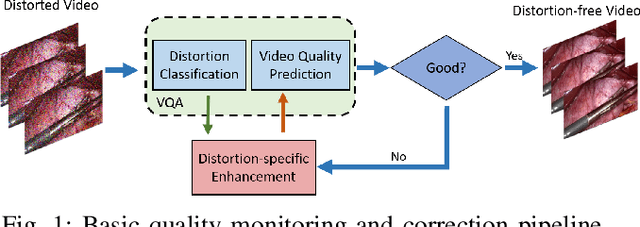
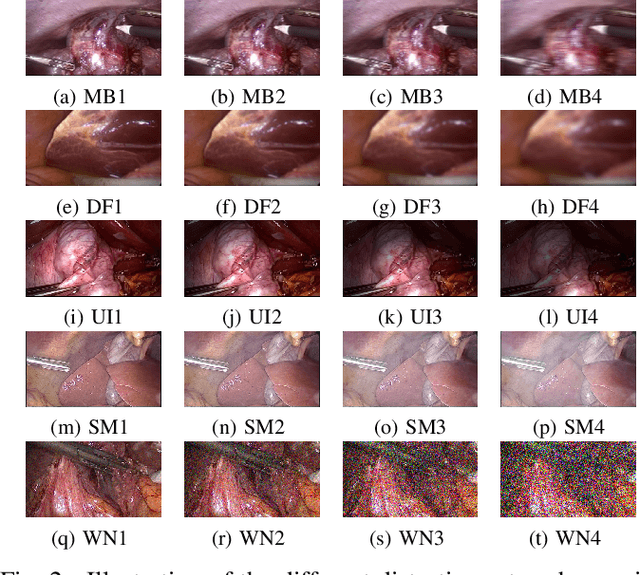

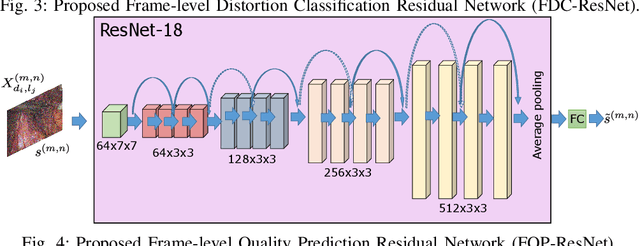
Abstract:Video quality assessment is a challenging problem having a critical significance in the context of medical imaging. For instance, in laparoscopic surgery, the acquired video data suffers from different kinds of distortion that not only hinder surgery performance but also affect the execution of subsequent tasks in surgical navigation and robotic surgeries. For this reason, we propose in this paper neural network-based approaches for distortion classification as well as quality prediction. More precisely, a Residual Network (ResNet) based approach is firstly developed for simultaneous ranking and classification task. Then, this architecture is extended to make it appropriate for the quality prediction task by using an additional Fully Connected Neural Network (FCNN). To train the overall architecture (ResNet and FCNN models), transfer learning and end-to-end learning approaches are investigated. Experimental results, carried out on a new laparoscopic video quality database, have shown the efficiency of the proposed methods compared to recent conventional and deep learning based approaches.
Residual Networks based Distortion Classification and Ranking for Laparoscopic Image Quality Assessment
Jun 12, 2021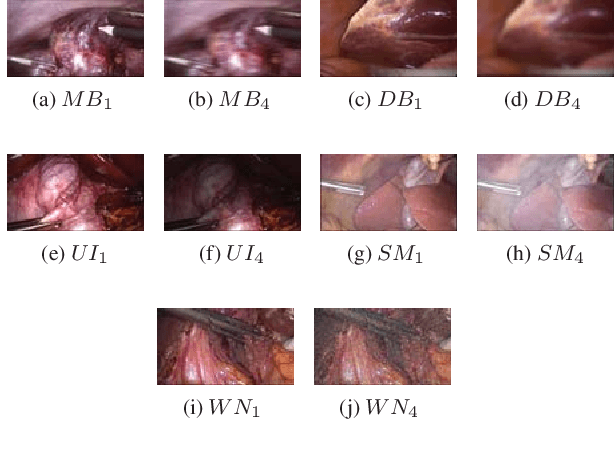
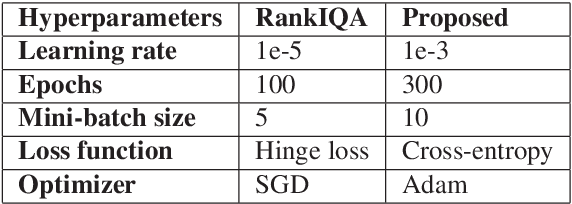


Abstract:Laparoscopic images and videos are often affected by different types of distortion like noise, smoke, blur and nonuniform illumination. Automatic detection of these distortions, followed generally by application of appropriate image quality enhancement methods, is critical to avoid errors during surgery. In this context, a crucial step involves an objective assessment of the image quality, which is a two-fold problem requiring both the classification of the distortion type affecting the image and the estimation of the severity level of that distortion. Unlike existing image quality measures which focus mainly on estimating a quality score, we propose in this paper to formulate the image quality assessment task as a multi-label classification problem taking into account both the type as well as the severity level (or rank) of distortions. Here, this problem is then solved by resorting to a deep neural networks based approach. The obtained results on a laparoscopic image dataset show the efficiency of the proposed approach.
A Smoke Removal Method for Laparoscopic Images
Mar 22, 2018



Abstract:In laparoscopic surgery, image quality can be severely degraded by surgical smoke, which not only introduces error for the image processing (used in image guided surgery), but also reduces the visibility of the surgeons. In this paper, we propose to enhance the laparoscopic images by decomposing them into unwanted smoke part and enhanced part using a variational approach. The proposed method relies on the observation that smoke has low contrast and low inter-channel differences. A cost function is defined based on this prior knowledge and is solved using an augmented Lagrangian method. The obtained unwanted smoke component is then subtracted from the original degraded image, resulting in the enhanced image. The obtained quantitative scores in terms of FADE, JNBM and RE metrics show that our proposed method performs rather well. Furthermore, the qualitative visual inspection of the results show that it removes smoke effectively from the laparoscopic images.
 Add to Chrome
Add to Chrome Add to Firefox
Add to Firefox Add to Edge
Add to Edge